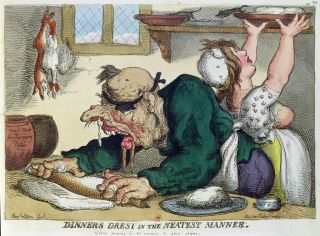
[ad_1]

Carcass of Beef by French artist Chaim Soutine, c. 1925. Even on this stylized model, photos of lifeless animals can elicit disgust. The prototypical odor of disgust is considered one of decay.
Supply: Wikimedia Commons/Public Area.
Upton Sinclair’s traditional description of early Twentieth-century meat packing is disgusting, to make sure. However disgust’s “most troubling,” and maybe its most fascinating, facet: “It attracts in addition to repels” (W.I. Miller, 1997), a truth emphasised by Freud (1905). Disgust is an emotion of “appreciable contradiction” (Strohminger, 2014).
The idea of disgust was pervasive in classical Latin and Greek literature (Lateiner and Spatharas, 2017), although the phrase itself didn’t seem till the 16th century.
Shakespeare by no means used the precise phrase. Nonetheless, his performs are replete with vile, foul, repulsive photos, together with considered one of Antony “quenching his thirst with horse urine”(Antony and Cleopatra), detailed within the newly revealed ebook Shakespeare and Disgust (Irish, 2023).

Satirical cartoon on culinary hygiene, by Nineteenth-century English artist Thomas Rowlandson. Sinclair’s “The Jungle” is rife with disgusting, vivid photos of the meatpacking trade.
Supply: Copyright Archives Charmet/Bridgeman Pictures.
Disgust was initially thought-about a “motivational system” that developed to detect pathogens (Kavaliers et al, 2018). It was an “emotion of regulation” governing incorporation and expulsion (Irish).
Paul Rozin, a analysis pioneer on disgust, writes that we have no idea how or when disgust originated, however there are a number of theoretical views: an evolutionary one, with its concentrate on minimizing pathogens and contamination; a cognitive neuroscience method, with a concentrate on mind areas, together with the insula (Kavaliers et al, 2021); and a psychopathology perspective, with its concentrate on worry and anxiousness (Rozin et al, 2018).
Different researchers have urged that disgust might have developed not solely to keep away from pathogen contamination however to manage selections a couple of alternative of mate and morality (i.e., creating sexual disgust) (Tybur et al, 2013).
.jpg?itok=T6NXA2vC)
“Saturn Devouring his Son,” by Spanish artist Francisco Goya, 1820-23. Museo del Prado, Madrid. Cannibalism sometimes brings to thoughts ideas of disgust.
Supply: Wikimedia Commons/Public Area.
Disgust has been described as a “shape-shifter.” With repeated contact, the identical object can lose its capability to stimulate disgust. Many occupations, similar to physicians, plumbers, and troopers, should overcome and address any preliminary disgust they might really feel to carry out their work successfully (Wilson, 2002).
One research, although, discovered that disgust is a “widespread expertise” amongst healthcare professionals, although not often mentioned, and should result in the neglect and abuse of sufferers (Hadjittofi et al, 2020).
The depth of disgust will increase the nearer we’re to the offending merchandise, together with human or animal waste, similar to feces, urine, saliva, and sweat (Angyal, 1941). “Biologists have thought that dust, within the type of bodily excretions, produces a common feeling of disgust. They need to do not forget that there isn’t a such factor as dust… dust is basically dysfunction… dust is matter misplaced.” (Douglas, 1966).
Human tears, although, don’t elicit disgust (Rozin et al). Tears are the “stuff of romantic poetry: they don’t defile… they purify, cleanse, bathe the eyes.” Most significantly, they’re unrelated to digestion or procreation (Douglas).
Feces appear to be an nearly common set off for disgust, although there are variations amongst cultures (Rozin et al). “Disgust… particularly in different folks’s feces… seemingly pertains to the excessive diploma of curiosity in what’s so odorous, natural, and not too long ago contained inside the physique,” (S.B. Miller, 2004), in step with Freud’s idea of response formation.
Infants don’t register precise disgust or react to aversive odors, though they’ll display a dislike for bitterness. A full-blown disgust response requires “enculturation,” i.e., social studying and elevated cognitive functioning, normally after rest room coaching, from ages 3 to five (Rozin et al).

The usage of leeches, from “The Decameron,” by Boccaccio. French College, fifteenth century. Leeches and different slimy creatures usually induce emotions of disgust, as do medical procedures similar to bloodletting.
Supply: Picture credit score: Copyright Archives Charmet/Bridgeman Pictures. Used with permission.
In his novel Amsterdam, McEwan writes of his protagonist’s disgust at discovering a mass of chewing gum embedded in his shoe, “Beneath the patina of grime, the gum was nonetheless barely pink, like flesh, and the odor of peppermint was faint however distinct. How appalling, the intimate contact with the contents of a stranger’s mouth.” (1999)
The explanations for such sturdy unfavorable reactions will not be all the time apparent (Angyal). Disgust is “removed from easy, (and) by no means a self-evident have an effect on… the creativeness itself underlies all experiences of disgust.” Disgust “facilities upon the physique, however flowers within the creativeness” (Wilson).
Disgust is “invariably a matter of boundaries”: many issues appear disgusting solely as a result of they threaten or transgress our private area (Wilson). In that sense, disgust is a gatekeeper emotion (S.B. Miller).

“The Bitter Draught,” by Seventeenth century Flemish painter Adriaen Brouwer. Stadel Museum. Disgust, actually, a “distaste,” usually produces an open mouth able to vomit.
Supply: Wikimedia Commons/Public Area.
The “’sympathetic legislation of contagion’ appears to be operative: as soon as involved, all the time involved” (Rozin and Fallon, 1987). Prototypically, write Rozin and colleagues, the odor of disgust is the odor of decay.
Notions of disgust, although, can change with intimacy or love (W.I. Miller). For instance, Freud says, “A person who will kiss a reasonably lady’s lips passionately might maybe be disgusted on the thought of utilizing her toothbrush” (1905).
A number of self-report scales are used to measure disgust, however research have used totally different scales and mirror appreciable variability in concept, measurement, and even tradition (Rozin et al.; Davey, 2011).
Disgust has developed from issues of style to an ethical time period carefully related to disdain and contempt (Wilson). Described as ethical dyspepsia, disgust is a “messy emotion” (Irish). “How can one emotion—disgust—have elicitors as various as excrement, amputation, incest, and flag burning?” (Rozin and Haidt, 2013).

“The 5 Senses: Scent,” by Seventeenth-century Dutch artist Jan Miense Molenaer. Mauritshuis. The Hague, The Netherlands. The sense of disgust can range, relying on circumstances. Altering a baby’s diaper could also be much less disgusting for its mom.
Supply: Mauritshuis Museum/ Public Area for academic use.
Although that query stays, we all know that disgust grew to become a “regulating have an effect on” that societies use to manage by stigmatizing and marginalizing people for his or her look or habits (Wilson). Those that are excessively overweight, for instance, are sometimes victims of stigma and should elicit disgust in others who want to create social distance from them (Vartanian et al, 2016; Vartanian et al, 2018).
Disgust is an emotion that imagines different folks as lower than human (Lateiner and Spatharas). The Nazis, for instance, referred to Jews as vermin, and the Hutu, throughout the Rwandan genocide, described the Tutsi as cockroaches (Rozin et al).

Medieval leper bell. These with the stigmatizing illness of leprosy had been usually required to hold a bell throughout the Center Ages to warn the general public.
Supply: Artistic Commons Attribution-Share Alike 3.0 Unported.
By encouraging stigmatization, disgust can result in avoidance, social withdrawal, and even aggression, significantly when it generates fears of contamination, disgrace, and even self-disgust (Terrizzi et al, 2023).
[ad_2]